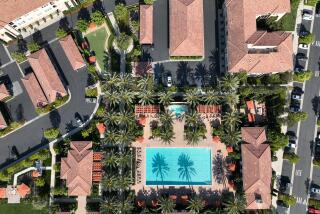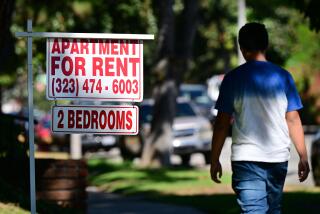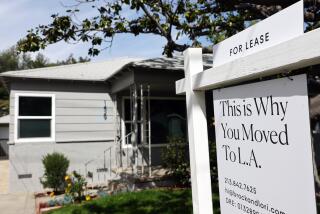San Diego County apartment rush continues. More than 4,500 planned for ’19
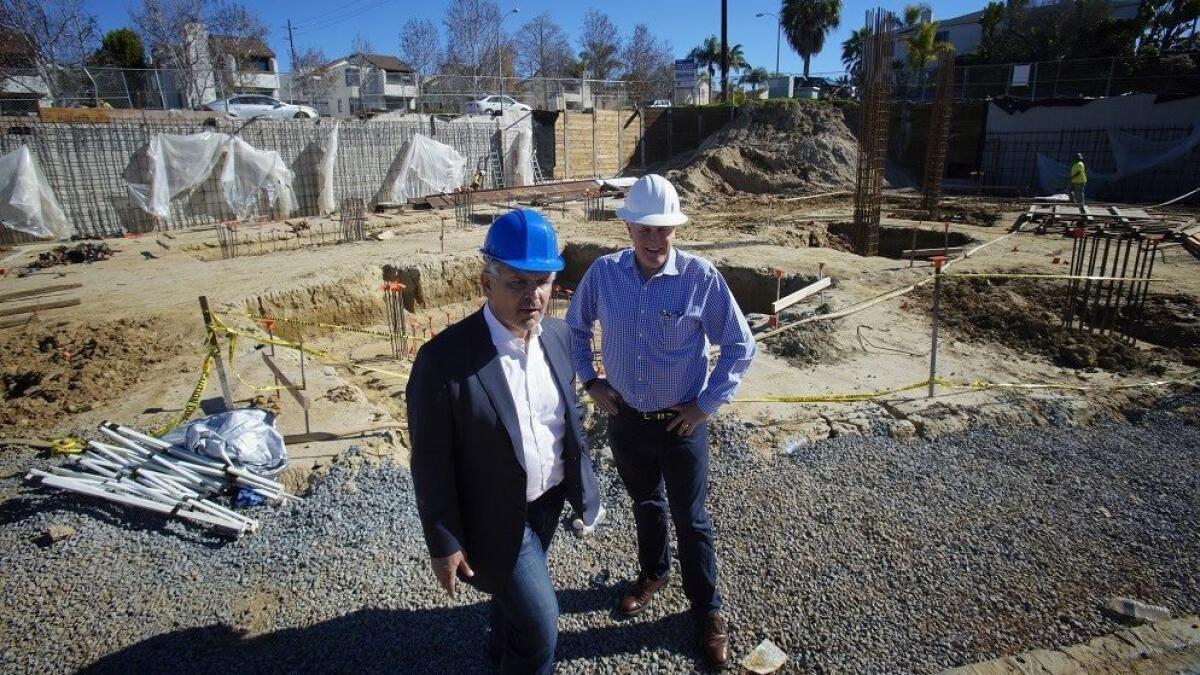
San Diego’s rental income gold rush shows no sign of slowing down.
More than 4,500 apartments are scheduled to open in 2019, outpacing last year’s total by roughly 1,000.
Last year, the multifamily market was dominated by immense new projects in downtown — especially in East Village and Little Italy — but many of the new apartment buildings this year are outside of the city center in neighborhoods like University Heights, Pacific Beach, Point Loma and North Park.
Analysts say the reasons for continued apartment growth are consistently rising rents, lack of homes and apartments in the for-sale housing and rental markets, as well as increasing barriers to homeownership making renting a necessary option.
“San Diego is perennially undersupplied. It’s a high demand, low supply market. So no matter when and where we get apartments, San Diego just doesn’t have problems with absorption at all,” said broker Darcy Miramontes with real estate investment and management firm Jones Lang LaSalle, or JLL.
JLL Research shows rents in the San Diego region growing by 4 percent in a year, outpacing Los Angeles (3.6 percent), San Francisco (3.5 percent), Oakland (2.5 percent) and Orange County (2.3 percent).
While San Diego County’s average rent, around $1,900 a month, is less than those markets, investors seem to be drawn to the county because of the potential for growth.
Investors are willing to throw down big sums of money for both new and old projects. The average sale for an apartment was $251,283 in the fourth quarter of 2018, said real estate tracker CoStar, up from $170,994 at the same time in 2014. Davia West Development purchased the Marc apartment building in San Marcos for $141.5 million, or $340,144 a unit. In August, TruAmerica paid $149.5 million for the Alterra apartments in La Mesa, about $283,600 a unit.
The biggest new apartment complex to open in 2019 will be One Paseo, the vast Carmel Valley development that mixes 608 rentals, retail and office space in a sort of city-within-a-city. The Kilroy Realty project is 23 acres and finally nearing completion 11 years after the site was purchased for $80 million.
It may seem that downtown development is slowing, but it’s not every year a megaproject opens. Downtown saw a major influx last year thanks to Park 12, the biggest apartment building in downtown San Diego’s history with 718 apartments near Petco Park. There were also plenty of new apartments opening in Little Italy and East Village, in contrast to this year.
The biggest project downtown scheduled to open this year is a second Pinnacle on the Park building in East Village with 472 apartments. However, downtown is set to see another major influx of apartments in 2020 and 2021. Bosa Development’s 490-foot tall apartment building, set to be the tallest residential building in downtown history with 617 apartments, is set to open its first tower in fall 2020 and the second in summer 2021.
JLL predicts downtown will remain a vibrant building location because of a straight-forward approval process through Civic San Diego, downtown’s planning agency.
Vacancy rates throughout San Diego County have remained low, around 4.5 percent this month, according to CoStar. Vacancy rates in areas where a lot of new apartments opened last year are noticeably higher. In East Village, the vacancy rate is around 26.6 percent, said CoStar, but it is down from 28.5 percent in the third quarter last year when a number of new apartments opened.
Meanwhile, in 2019, the focus will largely be on projects outside downtown. Aside from One Paseo, many of the new complexes range from three to 60 units and are spread throughout the county. Notable projects include the 300-unit Palisade at Westfield UTC, 88-unit Breeze Hill in Vista, 175-unit Jefferson Pacific Beach and 248 apartments at Vive on the Park in Kearny Mesa.
Nimitz Crossing
On Voltaire Street in Point Loma, near a busy intersection with Nimitz Boulevard, construction has begun on a $16 million apartment complex. The site seems quiet now with just a few workers among dirt, steel bars, dust and wood beams. By the end of the year, it should be a 24-unit apartment building with 9,000-square-feet of retail.
Next Space Development, formed in 2014, is one of the small San Diego developers reshaping the city’s neighborhoods with apartment buildings that rarely rise above a few stories. Its Point Loma project is a homecoming for the 15-employee company.
Rudy Medina, development director, and Andrew Luce, real estate director, were both raised in Point Loma and are aware of where opportunities are. They selected the Nimitz Crossing site in late 2016, paying $4 million, because they said it was underused with just a liquor market and vacant office space.
“This street has been a sleeper,” said Luce. “This is a neighborhood in need of some great new projects.”
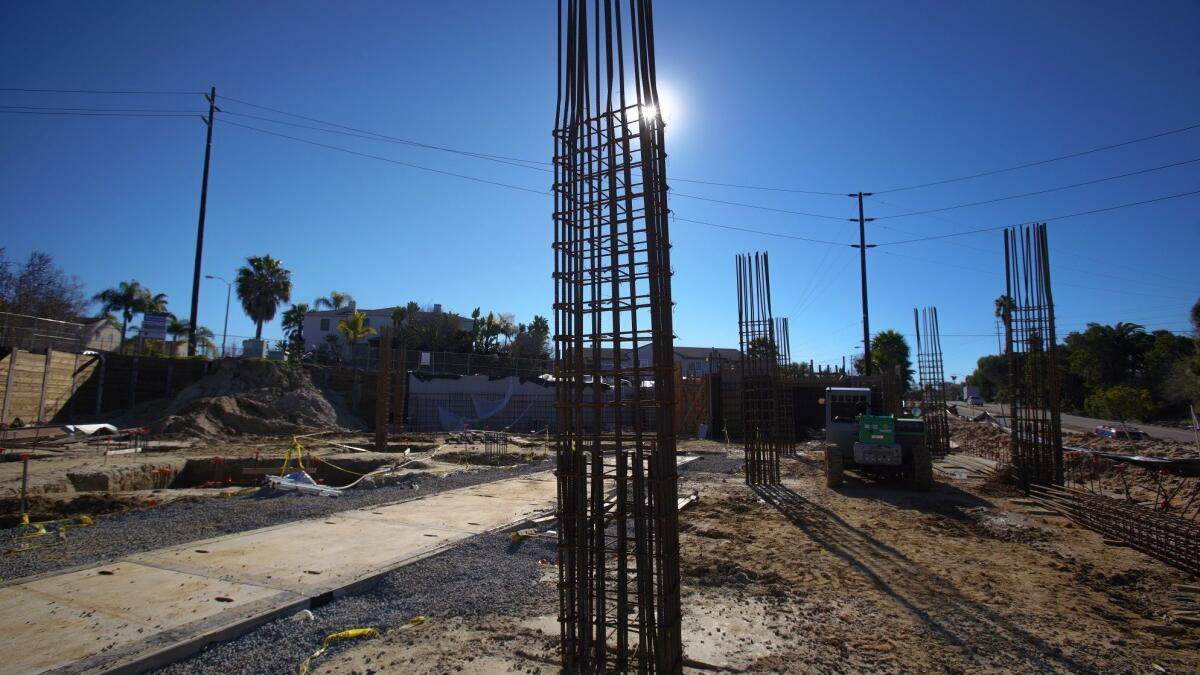
Voltaire Street is directly between Ocean Beach and Liberty Station, giving Next Space confidence it will be a highly desired location when it opens. The street is already transforming with a new townhouse project across the street from the apartments that are selling for $619,000 to $889,000.
Medina said rents will depend on market conditions but the company is anticipating a monthly range from the mid-$2,000s to mid-$3,000s. All the apartments will be two bedrooms and come with two parking spots. Next Space expects renters to be professionals who already have a strong desire to live in Point Loma. For retail, they would like a coffee shop and a local attorney has called about putting his office there.
While the project is still undergoing final revisions, the ideas for amenities include two parking spots per unit, gym, outdoor lounge with a fire pit and barbecue area, bike storage and car charging station.
Next Space has built seven projects from the ground up, a mix of apartments and condos. Medina said it wanted to built apartments because it is an opportunity for long-term cash flow, as opposed to selling condos. He joked that if he didn’t sell every project he ever worked on that he would be retired by now.
“We don’t need a big profit from the get-go,” he said. “This is a long-term approach.”
Nimitz Crossing has been designed by architects Awbrey Cook Rogers McGill, who were selected by Next Space after seeing their work on 41West, a 10-story luxury condo building in Bankers Hill.
While larger developers have bemoaned rising material and labor costs, Medina said they remain positive about future developments, in part, because of density bonuses and other incentives builders are getting to ease the region’s lack of housing.
Rent profits in Point Loma have shown an upward trajectory. The average asking rent for two-bedroom was $1,591 a month in the first quarter of 2014, said CoStar, and has increased to $2,224 this quarter.
One Paseo
San Diego County’s largest new apartment project is a lot more than just housing. The multi-million dollar development will feature high-end office space, trendy eateries like Shake Shack and Tender Greens, and a host of retailers that will make it a destination for more than just renters.
Total cash costs for the project were around $600.5 million as of September 2018, according to financial documents filed with the U.S. Securities and Exchange Commission.
There will be 608 rentals opening at the Carmel Valley development throughout the year, averaging around 989 square feet. Developer Kilroy has yet to set rents, but is likely to exceed county averages. Carmel Valley already commands higher rents, with the average for a two-bedroom around $2,812 a month, said CoStar.
Kilroy said it is waiting to announce rents until sometime in late February. The first 237 apartments will open in June and then roughly 100 more each month until the total 608 is reached.
Amenities will include co-working spaces, a bike workshop, surfboard storage, two pools, pet spa, citrus garden, outdoor event space, roof deck, movie screening room, game room, gym, yoga studio and electric vehicle parking, as well as a balcony on almost every unit.
Robert Little, a senior vice president with Kilroy, was there when the site was purchased for $80 million in 2008 and said it feels good to get to this point, but the company isn’t ready to rest on its laurels yet.
“Right now, it’s doing everything we can to start the project on the right foot,” he said. “Now, the pressure is on to deliver.”

On Thursday, One Paseo was jammed with workers rushing to meet deadlines; forklifts carrying wood, painters covering hallways, slabs of granite being added to kitchen islands and pavers placed on walkways. Little said there are around 120 workers a day just on the residential portion of the development.
Original plans called for a much larger One Paseo, although the number of apartments never changed.
Community opposition — citing traffic concerns, limited public transit options — led Kilroy to reduce the retail portion by 61 percent (247,000 square feet to 96,000 square feet) and office space by 42 percent (484,000 square feet to 280,000 square feet). A planned movie theater was completely removed.
The majority of the apartments will be two bedrooms, making up 60 percent of all units. One bedrooms make up 30 percent of the project, studios with five percent and three bedrooms also at five percent.
Kilroy also has 60 low-income apartments in the development, reserved for households that make under 60 percent of the area median income.
Rental Outlook
Rising mortgage rates and increasing home prices are anticipated by analysts to contribute to more demand in the rental market. A slowdown in single-family home construction, in favor of multifamily (apartments, condos, townhouses), may also factor into rent prices seeming more favorable than a monthly mortgage.
While it might not sit well with renters, revenue for landlords looks fairly good, according to real estate website Zumper. Of 100 metros studied in its January rent report, San Diego had the eighth highest rent in the nation for a one-bedroom for a monthly average of $1,950. It was higher than other big cities — such as Seattle ($1,900), Miami ($1,800), Denver ($1,530), Chicago ($1,500) — but was not the highest in California.
San Francisco still reigns as the most expensive market with an average $3,500 a month for a one-bedroom. It was followed by New York ($2,750), San Jose ($2,490), Boston ($2,450) and Los Angeles ($2,240).
Business
phillip.molnar@sduniontribune.com (619) 293-1891 Twitter: @phillipmolnar
ALSO
San Diego’s new single-family homes are pricey, modern and in short supply
Tijuana condo craze continues in to 2018
Last year’s housing market broke records
